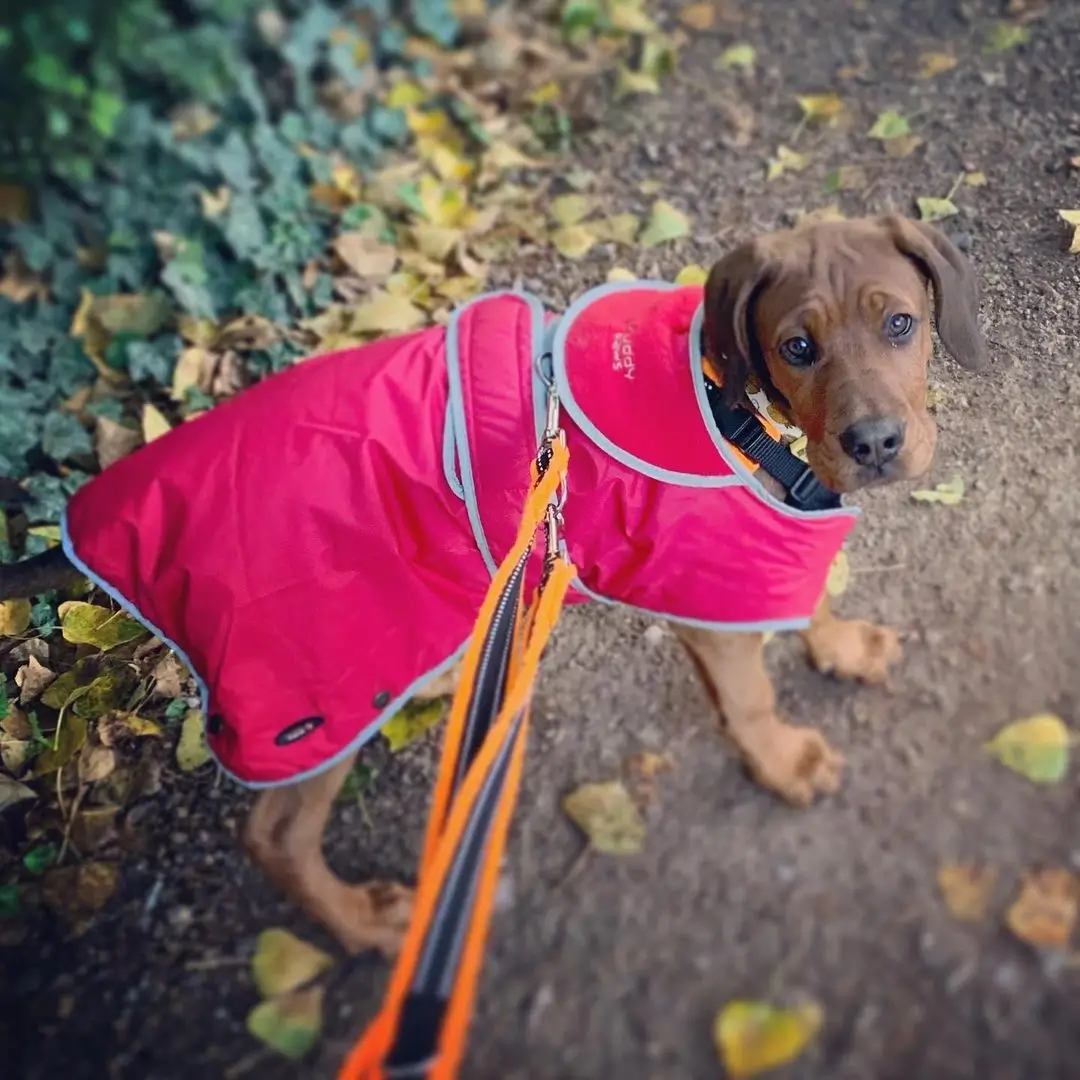Mixing different types of dogs has become very popular lately. One mixed breed that has garnered public interest is the Doberman Mastiff mix, which blends a nimble working breed with a heavy-set protector. But what exactly results when you cross these highly powerful lines? Let’s explore the unique Doberman Mastiff cross.
What is a Doberman Mastiff Mix?
A Doberman Mastiff mix is a cross between a purebred Doberman Pinscher and a purebred Mastiff, usually an English, Bull, or Canary Mastiff. It combines the agility and trainability of the Doberman with the formidable strength and size of a Mastiff. These designer hybrids are sometimes nicknamed “The Dobiff.”
What Does a Doberman Mastiff Mix Look Like?
- Large, muscular build ranging from 80-200 lbs
- Short, dense coat in black, red, fawn, or brindle
- Long tapered muzzle with some wrinkles
- Pointed ears often cropped into a standing position
- Powerful, broad chest and strong legs
- The tail is long and thin like a Dobie rather than a curled mastiff tail
View this post on Instagram
Origin
The Doberman is a German guard dog and mastiffs descend from ancient protective breeds. However, deliberate crossing of these lineages began recently, within the last 10-20 years, as hybrid dogs grew in popularity.
Genetics
Doberman Mastiff mix puppies can exhibit several physical and personality traits from either lineage. Even littermates display pronounced variances depending on what genes manifest.
Temperament
This mix balances the energetic drive of the Doberman Pinscher with the more mellow nature of most Mastiff breeds. Proper training and socialization from a young age helps ensure stable, steady temperaments suitable for guard or companion roles.
It is very tolerant if nurtured appropriately by experienced owners who can establish clear rules and boundaries early on. The Doberman mixed with Mastiff can make a very good family dog when properly trained and socialized.
Common Health Concerns for the Doberman Mixed With Mastiff
The Doberman Mastiff Mix is likely to suffer from various illnesses, including:
- Hip Dysplasia: Both Dobermans and Mastiffs are prone to hip dysplasia, a condition where the hip joint doesn’t fit properly into the socket. This can lead to discomfort, lameness, and arthritis.
- Gastric Dilatation-Volvulus (GDV): Large, deep-chested breeds like Mastiffs are susceptible to GDV, commonly known as bloat. This is a life-threatening condition where the stomach fills with gas and twists on itself.
- Dilated Cardiomyopathy (DCM): Dobermans are predisposed to DCM, a condition that affects the heart muscle, leading to decreased heart function and potentially heart failure.
- Wobbler Syndrome: This condition, more common in large breeds like Mastiffs, causes compression of the spinal cord, resulting in neurological issues such as weakness and difficulty walking.
- Hypothyroidism: Dobermans are prone to hypothyroidism, a condition where the thyroid gland doesn’t produce enough hormones, leading to various symptoms such as weight gain, lethargy, and skin problems.
- Eye Issues: Dobermans and Mastiffs may be prone to certain eye conditions, including progressive retinal atrophy (PRA) and cataracts.
- Obesity: Due to their size and potential for joint issues, obesity can exacerbate health problems in the Doberman Mastiff mix. Maintaining a healthy weight through proper diet and exercise is essential.
- Bloat: Large, deep-chested breeds like Mastiffs are predisposed to bloat, which requires immediate veterinary attention.
- Joint Problems: Both Dobermans and Mastiffs are susceptible to joint problems such as osteoarthritis and elbow dysplasia, which can cause pain and mobility issues.
Regular veterinary check-ups, a balanced diet, proper exercise, and early intervention, if any health issues arise, are crucial for ensuring the well-being of the Doberman Mastiff mix. Also, consider getting your dog from a reputable breeder.
Common Care and Grooming Practices
Here are common care and grooming practices you should observe if you own a Doberman Mastiff mix:
- Regular Exercise: Dobermans and Mastiffs are active breeds, so your mix will likely require regular exercise to stay healthy and mentally stimulated. Aim for daily walks, play sessions, and activities that challenge them physically and mentally.
- Nutritious Diet: You should feed your Doberman Mastiff mix a high-quality, balanced diet appropriate for its age, size, and activity level. Avoid overfeeding to prevent obesity, which can exacerbate health issues common in large breeds.
- Grooming: Brush your dog’s coat regularly to remove loose hair and prevent matting, especially if they inherit the longer coat of the Mastiff parent. Use a slicker brush or grooming mitt to keep their coat in good condition.
- Bathing: You should bathe your Doberman Mastiff mix as needed, typically every 6-8 weeks or when it gets dirty. Use a dog-specific shampoo and thoroughly rinse to avoid skin irritation.
- Dental Care: Practice regular dental care by brushing your dog’s teeth several times weekly to prevent plaque buildup and dental issues. Dental treats or toys can also help promote good oral health.
- Ear Cleaning: Check and clean your dog’s ears regularly to prevent wax buildup and ear infections. Use a veterinarian-recommended ear cleaning solution and avoid inserting anything deep into the ear canal.
- Nail Trimming: You should trim your dog’s nails to a comfortable length to prevent them from becoming overgrown and causing discomfort or issues with mobility. Trim nails as needed, typically every 4-6 weeks.
- Training and Socialization: Start training and socialization early to ensure your Doberman Mastiff mix develops good manners and is well-adjusted around people and other pets. Use positive reinforcement techniques and provide plenty of opportunities for social interaction.
- Veterinary Check-ups: Schedule regular veterinary check-ups to monitor your dog’s overall health and catch any potential issues early. Vaccinations, parasite control, and preventive care are essential for keeping your mix healthy.
- Environmental Considerations: You should provide your dog with a comfortable living environment with access to shelter from extreme weather conditions. Due to their size, Doberman Mastiff mixes may not be suitable for apartments and require a spacious living area.
These care and grooming practices contribute to the overall health, happiness, and well-being of your Doberman Mastiff mix.
How Much Does a Doberman Mastiff Mix Puppy Cost?
For a responsibly bred Doberman mixer with Mastiff from health-tested parents, expect to spend between $800 to $2500 or more per puppy. Show breed lines with papers are more costly. Adoption costs are significantly lower, from $50 to $400 depending on the rescue.
Conclusion
Blending the swift Doberman Pinscher with a massively sized Mastiff breed results in an imposing hybrid capable of protecting and providing companionship. With proper care, training, and socialization, the Doberman Mastiff mix can thrive as a loyal and loving family companion. As with any dog, you should understand and meet their needs for a fulfilling and enriching relationship.
FAQs
Is the Doberman Mastiff mix a good family pet?
Yes, when socialized early on and raised with proper training, they can thrive as devoted gentle giants within an active family.
What health issues does the Doberman mixed with Mastiff have?
Hip dysplasia, eye problems, heart disorders, and bloating are the most prevalent issues facing this giant crossbreed.
How much exercise does a Doberman Mastiff mix need?
At least 60-90 minutes of vigorous daily activity as well as mental stimulation through advanced training to prevent destructive boredom behaviors.
What colors does the Doberman Mastiff mix come in?
Most often black, red, fawn, or brindle. Blue Dobes should never be mixed due to serious genetic issues associated with diluted Doberman coloring.
